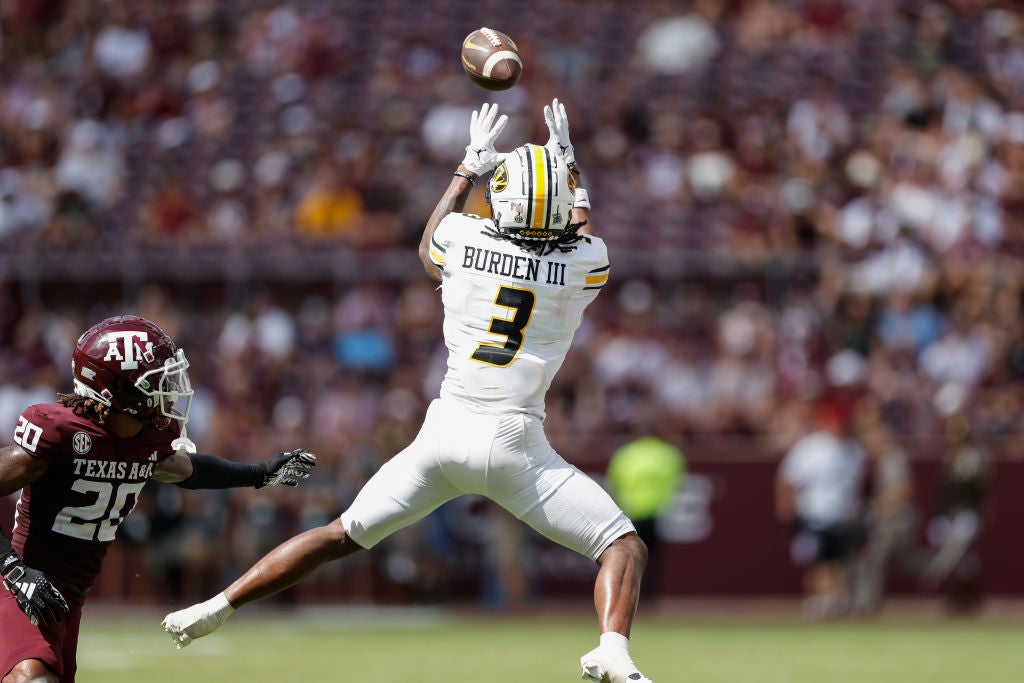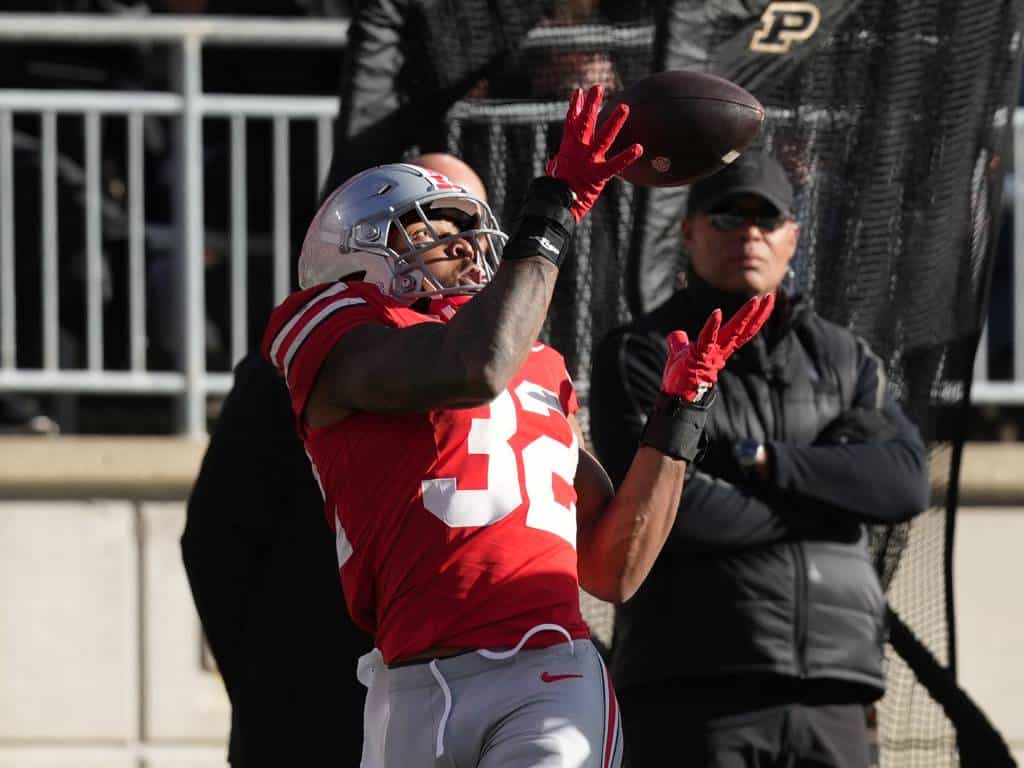Two picks, and two offensive players added by the New England Patriots in the 2025 NFL Draft. However, there was a stark difference between the two picks.
With their top pick, the Patriots addressed a premium position and a key position of need when they took left tackle Will Campbell. At Pick 38, they took a player at a position that wasn’t as clear of a need, and certainly isn’t a premium position with the selection of Ohio State running back TreVeyon Henderson. In a sense, that first selection was based more around need, while Henderson’s selection feels more like a pure ‘best player available’ approach.
The thing about pure ‘best player available’ selections is the path to them contributing – especially immediately – may not be as clear. They’re not filling an obvious need, so sometimes teams may need to get creative.
For Henderson and the Patriots though, it might be simpler than that. Maximizing Henderson may mean a change for how the Patriots manage their running backs as he joins a depth chart currently led by Rhamondre Stevenson and Antonio Gibson – but it shouldn’t be anything new for returning offensive coordinator Josh McDaniels.

Over the past three seasons the Patriots have split their running back carries across situations. Running backs would sub in and out by drive or simply by fatigue.
That was a departure from how the Patriots managed their backs under McDaniels. For the better part of the two decades prior the Patriots prioritized specialized backs and split the workload by role. That meant having early-down backs (ex. Antowain Smith, LeGarrette Blount, Sony Michel) and passing-down backs (ex. Kevin Faulk, Shane Vereen, James White).
With McDaniels’ returning this year, there was speculation the Patriots would return to that strategy at running back. That was reinforced by them meeting with passing-down backs during the pre-draft process.
Henderson has three-down upside, but the skills he flashed in the passing game suggest he has a chance to thrive in that passing-down role. He has sure hands and as a route runner is ahead of where most running backs are when they enter the draft. Once in the open field Henderson has the agility, burst, and breakaway speed to be a big-play threat even on short passes. Also importantly, Henderson is plenty capable as a pass blocker.
Given that, Henderson projects as a player who can slot into the pass-catching role, with Stevenson returning to a more early-down focused role like he was in as a rookie. That will help create more mismatches for Drake Maye in the passing game while limiting Stevenson’s workload and allowing him to stay fresher for when he’s needed. His physical running style can wear down defenses, with Henderson stepping in as a home run threat playing off of that.

That should be the setup initially, but things can still evolve over time. Unlike other previous passing-down backs in New England though, Henderson is more well-rounded and offers more on traditional run plays. The biggest downside of splitting carries situationally can be that the offensive becomes predictive based on which back is in the game (this was a common talking point when the Patriots had Michel and White splitting duties in 2018), but with Henderson’s ability to be a factor as an outright ballcarrier that should be negated.
With his well-rounded style, Henderson isn’t just in a position to be more multiple in that passing-down role, but he could also push Stevenson for the lead-back role as he grows in the NFL. Stevenson, 27, signed a contract extension with the team last offseason but the team has an easier out from that contract in the summer of 2026 per OverTheCap. Stevenson is coming off of a down year in 2024 when he averaged a career low 3.9 yards per carry and fumbled seven times – matching his total from the three previous seasons combined.
“I’d say I’m fast. I’m explosive,” Henderson said when asked to describe his game when talking with Patriots reporters after the pick. “I’m good in one-on- one matchups, my receiving ability, my blocking – I pretty much can do it all.”
Whatever role Henderson ends up in, he brings what the Patriots’ needed on offensive in this draft – speed and big play ability. However, he wasn’t the only player on the board fitting that description and likely now has a player he’ll be compared to for the rest of his career based on the next pick.
In selecting Henderson the receiver-needy Patriots passed on Missouri’s Luther Burden III. Burden went with the next pick, 39th overall to the Chicago Bears.

Burden is one of the most explosive players in this draft. Able to get open at all three levels as a route runner, he has the speed and elusiveness after the catch to turn any route into a touchdown. Player comps have included Zay Flowers and Deebo Samuel.
However, after a breakout 2023 season Burden’s production dropped off in 2024 as the Tigers’ offense as a whole struggled. That led to Burden showing visible frustration with teammates on the sideline on multiple occasions, with further questions about his mental makeup emerging as the pre-draft process went on.
Given how the Patriots have prioritized mental makeup and culture building throughout this offseason there’s a chance Burden was either lower than the consensus on their board, or not on their board at all. Now, there will be a long-term question about whether passing on him was justified to take a running back – albeit one who has his own big-play potential as a ballcarrier.
In order to make the most out of their investment in Henderson and maximize that pick, look for the Patriots to get him involved in the passing game early and often. It’s something McDaniels is no stranger to, and now he’ll try to pick back up where he left off in that regard in 2021.

